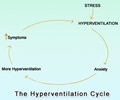Women suffer from "atypical" symptoms and "invisible" blood vessel blockages that may explain why they often receive less treatment for heart attacks than men, a study said Tuesday.
Women were twice as likely as men to have normal results for an exam of their blood vessels or results showing no blockage of more than 50 percent in a blood vessel, despite having a heart attack, the study found.Other test results confirmed they were having a heart attack, according to the study published online in the journal Heart.
The study was based on data from 25,755 men and women in 14 countries who had a heart attack or chest pain episode between 1999 and 2006, all of whom had an angiogram.
An angiogram allows doctors to see blockages in the heart's blood vessels -- a major cause of heart attacks, chest pain and strokes.
Chest pain remains the top symptom to detect heart attacks among both sexes, but the lack of serious blood vessel blockages among women might explain why they get less treatment than men, the study said.
"We've made great strides in treating women with heart disease, but these data show there's still much to be done -- and that we need to find out whether women might have blockages that are 'invisible' on angiograms," said Kim Eagle, the study's senior author and co-director of the University of Michigan Cardiovascular Center.
Advertisement
Women were also less likely to get an angioplasty or a stent to open up their blood vessels, no matter the gravity of their blockages, it said.
Advertisement
Female patients also often described different symptoms than men when first reporting to hospital.
While 94 percent of men and 92 percent of women reported feeling chest pain, female patients with no chest pain were more likely to describe "atypical" symptoms such as nausea and jaw pain, the study said.
Heart diseases are the leading cause of death among women in the United States, with 459,000 deaths a year.
Source-AFP
SRM











